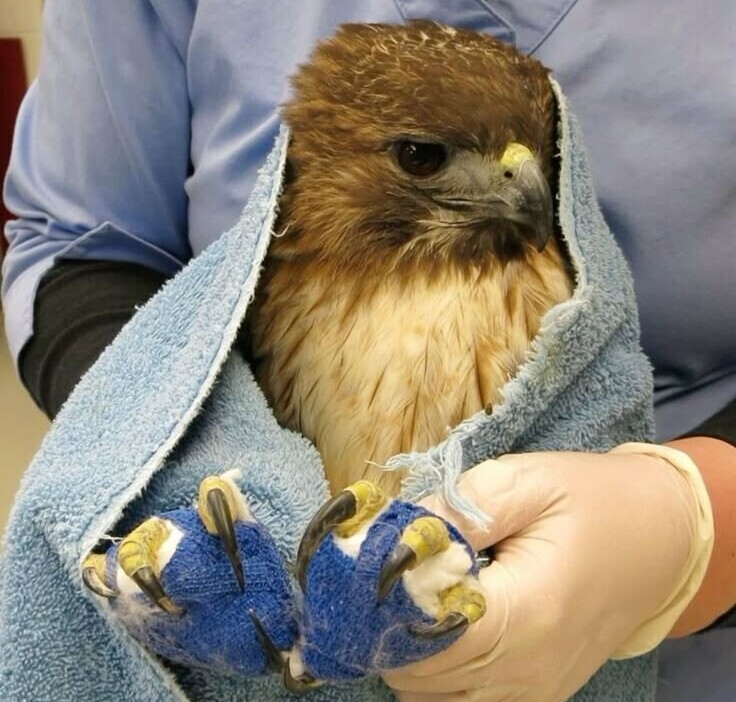Birds, like humans, can also suffer from bone fractures, bruises, hairline cracks, or joint dislocations. Stay with us as we explore the signs of a bird’s leg fracture and how to treat it.

According to the Pet Care Service of Saed News Agency, leg fractures in birds are a common issue among both domestic and wild birds, which can occur due to various causes such as trauma, falls, or underlying medical conditions. Prompt recognition of symptoms and proper treatment can greatly help in the bird’s full recovery and in preventing serious complications. In this article, we explore the signs of leg fractures in birds, diagnostic methods, and treatment options, aiming to provide comprehensive information for bird owners and veterinarians.

Due to their delicate and fragile nature, birds are particularly vulnerable to physical injuries like leg fractures. The following signs may indicate a fracture:
Limping or Avoiding Use of the Leg: The bird may refrain from using the injured leg or show noticeable limping.
Swelling or Deformity: A broken leg might appear swollen, bruised, or unnaturally bent.
Pain and Sensitivity: The bird may react when the leg is touched and show unusual behavior such as aggression or withdrawal.
Reduced Mobility: The bird may move less and avoid jumping or perching.
Behavioral Changes: Symptoms like loss of appetite, lethargy, or feather-plucking can signal stress due to pain.
Early detection of these symptoms is critical to prevent infections, improper bone healing, or even loss of the limb.
Leg fractures in birds may be caused by:
Trauma or Falls: Collisions with hard objects, falling from heights, or getting a leg caught in the cage.
Nutritional Deficiencies: Lack of calcium or vitamin D can make bones brittle.
Metabolic Diseases: Conditions like osteoporosis or rickets.
Animal Attacks: Bites or attacks from other pets or birds.

Treatment depends on the severity and type of fracture (simple or compound) and the bird’s overall health. Common methods include:
For simple fractures, a veterinarian may use a splint or light bandage to immobilize the bone. Key points:
The splint must be lightweight and not place undue pressure on the bird.
Regular bandage changes are essential to avoid infection.
The bird should be kept in a calm, stress-free environment.
For complex or displaced fractures, surgery may be necessary. This involves inserting small pins or plates to stabilize the bone. Surgery is typically done under general anesthesia and requires post-operative care.
To reduce pain, the vet may prescribe non-steroidal anti-inflammatory drugs (NSAIDs) such as meloxicam. All medications should be administered under veterinary supervision to avoid side effects.
Proper nutrition plays a key role in recovery. The bird’s diet should include:
Calcium and Vitamin D: Supplements or calcium-rich foods like leafy greens to strengthen bones.
Protein: Protein-rich foods such as boiled eggs help with tissue repair.
Hydration: Ensure access to clean, fresh water.
After the bone heals, gentle physiotherapy can help restore mobility. This includes supervised, light leg movements under veterinary guidance.
To reduce the risk of fractures:
Safe Environment: Ensure the cage is free from sharp objects or unsuitable bars.
Balanced Diet: Provide a diet rich in calcium and essential vitamins.
Exercise and Movement: Allow the bird to fly or move freely in a safe space to strengthen bones.
Regular Check-ups: Routine veterinary visits to detect early health issues.
Leg fractures in birds are serious but treatable conditions if diagnosed early and managed with professional care. By recognizing the symptoms, seeking timely treatment, and providing appropriate care, bird owners can help their feathered companions return to a healthy, active life. If you own a bird, always consult an avian veterinarian and avoid self-treatment.

